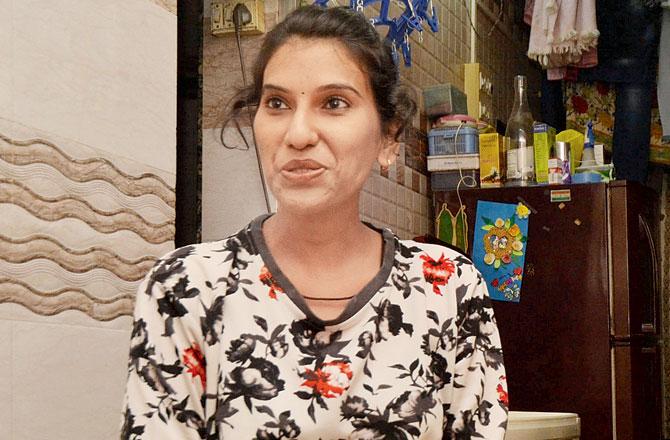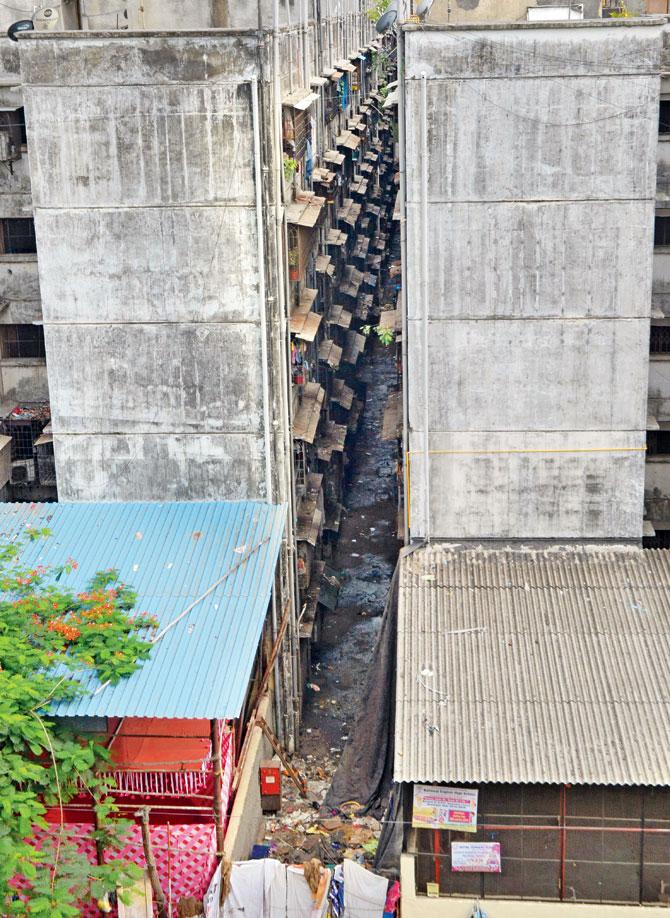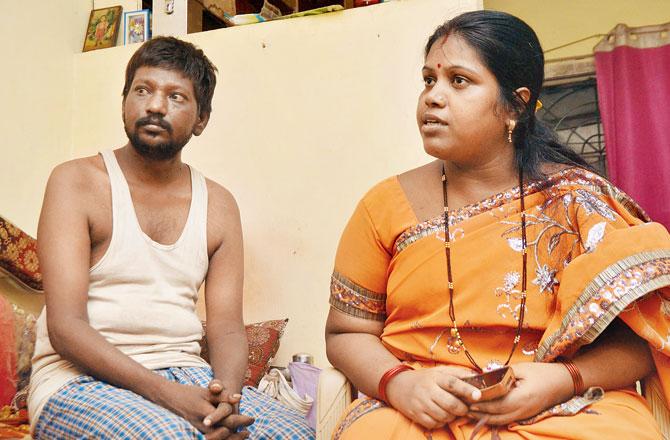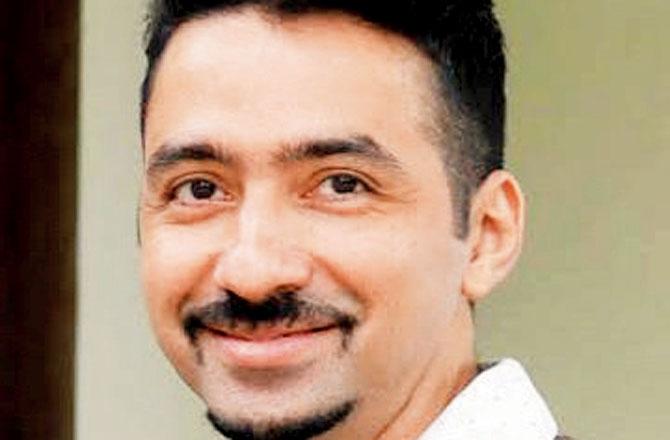UDRI releases film that offers easy hacks, including openable, not sliding windows, to make future public housing projects humane, unlike Mankhurd's hellhole where every 10th home has a TB patient

An IIT-B and Doctors For You survey conducted last April revealed the relation between poor airflow and infectious diseases. Pics/Datta Kumbhar
At 29, Abeer Khan's lens has captured everything from the dingy lanes of Dharavi to the quaint, yet vibrant spirit of Kolkata, and the pallid gloom of Kashmir. But, the Mumbai-based photographer and filmmaker's most challenging project came earlier this year, when she was approached by the Urban Design Research Institute (UDRI) to make a documentary on the 12-year-old resettlement colony of Lallubhai Compound in suburban Mankhurd, where incidents of tuberculosis have become commonplace. "When I first visited the site [February this year], I had to wear plastic shoe covers and a mask," she recalled. But what shocked Khan was the contiguity of the 65-odd buildings in the colony. "The structures were only a few metres apart. I had to be careful that I don't catch an infection."
Khan's four-minute film, Free Housing — Free TB, now available on UDRI's YouTube page, leads us through the narrow maze of this diseased colony, offering us glimpses of the dark and poorly-ventilated rooms from the inside, where residents put the lights on as early as 9 am, due to lack of sunlight. The film, which took two weeks to make, features several residents, who were diagnosed with TB after moving here, including Raosaheb Deshmukh Kamble of building number 43, who suffered a relapse after treatment, and the family of Bholanath Pal. The Pals moved to Lallubhai seven years ago. A year later, Bholanath's daughter was diagnosed with TB; after she was declared TB-free, Bholanath got the infection.
ADVERTISEMENT

Rupali Patil, 30, former beautician, MDR TB survivor
Pankaj Joshi, executive director, UDRI hopes that the film will help start a conversation not just on the right to adequate housing, but also the quality of living. The situation, he said, is particularly worrying because the current Development Plan (DP) 2034 has allowed "buildings of any height to be built for slum rehabilitation". "At present, seven-storeyed buildings are just three metres apart, which is already a problem. And now, according to the finalised DP, even 40-storeyed buildings will have the same distance between them. This way, only the top two floors will get direct sunlight, but the rest of the tenements will end up being deprived of ventilation," said Joshi. With the haphazard manner in which the city is growing vertically, Joshi fears that the TB problem will no longer be restricted to M-East ward in Mankhurd. "We are in for a serious problem.
Free housing is a design failure. Our documentary aims to bring the issue into the public domain. As much as housing is your right, the right to life is far more superior," he added. According to Joshi, Lallubhai is not just a case study on poor housing, but also the consequences of it.
A colony gasping for air On a weekday afternoon, a day before monsoon hit the city, when the rest of Mankhurd was witnessing a bright and sunny afternoon, the lanes of Lallubhai Compound were enveloped in darkness.

The 12-year-old resettlement colony of Lallubhai Compound in Mankhurd has around 65 buildings; each building is situated at a distance of three metres from each other. Due to this, only the top two floors will get direct sunlight
A scrawny resident, Rupali Patil, volunteered to take us to her one-room-kitchen home on the second floor of a five-storey building. Here, we met the 30-year-old beautician's mother, Usha. "Until two years ago, she [my daughter] was a looker. Auto rickshawallahs in the area would queue up to ferry her to the railway station. But today, nobody recognises her."
Patil suffers from multi-drug-resistant tuberculosis (MDR-TB). It is a form of TB infection caused by bacteria that are resistant to treatment with at least two of the most powerful first-line anti-TB medications, isoniazid and rifampin.

Pankaj Joshi
Until 2017, Patil and her family lived in Tata Nagar slum in Navi Mumbai. "But, suddenly we were told that our local municipal corporation was moving us to Lallubhai Compound, free of cost. We were excited about moving into a building," Patil recalled, who at the time, worked at a beauty salon in CBD Belapur. A couple of months after moving into her new home, she was diagnosed with TB. "I ate well and worked in hygienic conditions, so I was shocked. I then went to Dr Vikas Oswal, a pulmonologist at Shatabdi Hospital in Chembur. He wasn't surprised, because most of his patients were from Lallubhai." Patil is in the final leg of her treatment.
Like Patil, 37-year-old Vinod Jaiswal, his wife and 12-year-old son moved here from Chembur's Sindhi Camp, two years ago. "Our room never received proper sunlight. We had to switch on the lights from 9 am, right till we went off to sleep, due to which our electricity bills would come up to Rs 1,700 every month."

Vinod Jaiswal, was diagnosed with TB soon after he moved to Lallubhai from Chembur's Sindhi Camp in 2017. As his room is poorly-lit, he keeps the lights on at his home all day. "Because I was paying so much for electricity, I didn’t have enough money for my medication," he said
When Jaiswal was diagnosed with TB, he had to give up on his job at the local garage. "The treatment took a toll on my physical and mental health. Because I was paying so much for electricity, I didn't have enough money for my medication," said Jaiswal, who was declared TB-free four months ago.
Where is the sun?
Having noticed a sharp increase in TB cases among residents of Lallubhai Compound and Natwar Parekh Compound, another slum rehabilitation site in the M-East ward, Dr Ravikant Singh, MBBS and MD, public health from KEM Hospital and member of NGO, Doctors For You, decided to pool in resources to study the root cause of the problem.

A grab from the UDRI film, Free Housing-Free TB, shows a dimly-lit passageway in one of the buildings at Lallubhai Compound
After receiving grants from Mumbai Metropolitan Region Development Authority (MMRDA) in 2017, the NGO roped in IIT-Bombay and undertook a detailed study, which was released in April last year. "We used gadgets to measure airflow within the buildings," said Dr Singh, who led the project. They also conducted a household survey to find architectural and socioeconomic details of each home and family. Almost one in 10 households in the complexes with poor access to sunlight and ventilation had a person infected with TB. The study concluded that poor access to sunlight, lack of air circulation and dearth of space had resulted in the abnormally high incidence of TB.
Citing the urban quarters of Hong Kong, the study pointed out that there was a positive correlation between height of the building and tuberculosis. "The lower floors [in the HK homes] had more TB cases, as they had less access to sunlight and fresh air," the report said. In an ecological study carried out in Birmingham, it was established that TB spread during winter season, when there was less exposure to sunlight. A similar study in Peru associated TB incidence with the potential risk factors like crowding of the houses, hours of sunlight exposure and vitamin D deficiency.

Kaiwan Mehta
Keep a distance
Soon after Doctors For You's findings, the UDRI sent its first suggestion to Chief Minister Devendra Fadnavis, requesting that the government make urgent amendments to the existing Development Control Regulations (DCRs) for Greater Mumbai. It stated, "As per general building regulations, the distance between buildings of 24 metres in height should be eight metres."
The CM responded to the letter only in April this year, stating that the distance between buildings would be modified to six metres. But Joshi feels this is still not enough. "You require a distance of at least 12 to 18 metres," he said. "While existing blocks can be retrofitted, same mistakes cannot be made in new constructions." The current SRA homes have sliding windows, thus blocking natural ventilation. "The position of windows also plays a very important role in modifying natural ventilation strategies within the room. Openable windows will be the best option. The other immediate solution is to install exhaust fans. Lack of exhaust fans [mechanical ventilation] is correlated to TB prevalence," Joshi said.
Dr Zarir Udwadia, pulmonologist, Hinduja Hospital, who gets a lot of TB patients from Mankhurd and Govandi, said that "sunlight and ventilation are very important" for prevention as well as recovery. "The government needs to re-think the design of the homes," he said.The fact that TB is contagious means that the infection will soon spread outside of these diseased colonies, said Joshi. He suggests that a detailed house-to-house survey of all the high-density settlements be carried out for mapping the incidence and gauging the scale of spread of TB.
"The government thinks the rich need to have light and ventilation, but the poor don't. But you cannot afford to have a diseased city. Most of these SRA occupants are our peons, cab drivers and house-helps. And if they are infected, the whole city is at a risk. Can we imagine how that would be?" asked Joshi. While the BMC's TB report stated that the city had recorded a fall in TB deaths by 24 per cent between 2013 and 2016, it had also highlighted a rise in drug-sensitive and MDR cases since 2018. "In 2018, there were 46,513 reported cases of drug sensitive infections as compared to 45,675 in 2017," the report released in April, pointed out. Similarly 4,969 cases of MDR were reported, as compared to 4,891 cases in 2017.
Architecture theorist, educator and urban researcher Kaiwan Mehta said that when SRAs are constructed, "the only aspect that the authorities look at is the size of the room". "What is not identified is how you will organise these units? The composition in which you will place or construct these units is also never decided. This later becomes a problem and leads to rising health disorders. Unfortunately, there are no guidelines in place for this. The government needs to make some norms so that at least a basic amount of sunlight and ventilation reaches the residents."
When asked if designs of other cities can be replicated here, Mehta said that it won't be the correct solution. "Every city is designed in a different way and has its own challenges in terms of population and weather conditions. So you cannot replicate a plan adopted in Ahmedabad here. But what you can do is create your own plan by following some basic rules and by-laws before building these SRAs."
8m
Average distance between 24m-tall buildings, as suggested by UDRI
Catch up on all the latest Crime, National, International and Hatke news here. Also download the new mid-day Android and iOS apps to get latest updates
 Subscribe today by clicking the link and stay updated with the latest news!" Click here!
Subscribe today by clicking the link and stay updated with the latest news!" Click here!







